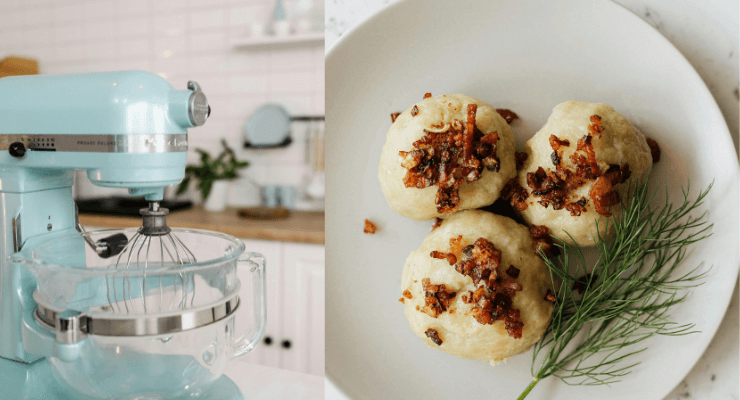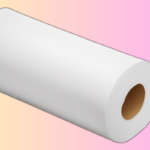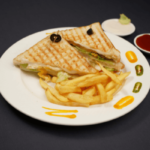Mashed potatoes hold a cherished spot as a comfort dish, frequently gracing dining tables globally. They’re the ultimate side dish; creamy, hearty, and versatile, capable of complementing everything from the Sunday roast to a simple weeknight chicken dinner. Achieving the perfect texture, however, can sometimes feel like a culinary tightrope walk—too lumpy or overmixed, and your potatoes will go from heavenly to heavy. Enter the trusty stand mixer, a kitchen tool typically associated with cakes and breads rather than savory mashes. But can a stand mixer truly be the time-saving wizard that simplifies one of the cook’s iconic recipes? The answer might surprise you.

The Basics of Mashed Potatoes
Before we explore fancy gadgetry, it’s imperative to understand the basics. Mashed potatoes are deceptively simple, necessitating just a few foundational ingredients: potatoes, butter, milk or cream, and salt.Attaining the ideal equilibrium of fluffiness and creaminess is where the true artistry unfolds. The traditional method involves boiling potatoes until tender, then mashing them by hand or with an electric device. Yet, for decades, it’s been a mystery if the stand mixer, often a companion for bakers and pastry chefs, can deliver the same excellence to a humble mashed potato.
The Stand Mixer Solution
Here’s why the stand mixer presents itself as a game-changer. For one, it takes the manual labor out of mashing—no more tired arms. Its consistent mixing action promises creamy spuds with reduced risks of overbeating. While the stand mixer may seem an unlikely contender for this starchy showdown, gospel from professional chefs and home cooks alike suggests otherwise. The speed and precision of a stand mixer’s whip attachment can offer results that are not just convenient, but superior, too.
Mash Potatoes in a Stand Mixer: Step-by-StepGuide
Ready to test out standing mixers for your mash? Discover a detailed, step-by-step manual to ensure your mashing efforts are met with great success.
1. The Right Potatoes
Select starchy potatoes like Russets or Maris Pipers. Waxy potatoes contain more moisture and can lead to a gluey texture when mixed with a stand mixer.
2. Boil and Drain
Peel and cut your potatoes before boiling. Once they are fork-tender, drain them thoroughly. Excess moisture is the stand mixer’s nemesis.
3. Milk and Butter Warm-Up
Heat your milk or cream with the butter, being careful not to scorch it. Warm ingredients help keep the texture of your mashed potatoes consistent.
4. Mixing Time
Attach the paddle or whisk to your stand mixer. Mix the potatoes on a low setting to start and gradually increase speed to avoid splattering hot potato.
5. Add the Good Stuff
Pour the warm milk and butter mixture into the mixing bowl when your potatoes are almost at your desired consistency. Continue mixing until smooth.
6. Season to Taste
Season to taste with salt and pepper, bearing in mind that it’s preferable to start with less and add more as needed. Over-seasoning is hard to fix.
Tips for Perfect Mashed Potatoes
Discover expert advice to lead you to the pinnacle of mashed potato perfection:
- Use room-temperature butter to prevent a drastic temperature change when adding to the hot potatoes, which could lead to a greasy texture.
- Warm your milk or cream slightly with the butter. A hot mixture keeps the potatoes warm and pliable.
- Start with the paddle attachment for a chunkier mash. Switch to the whisk attachment for a smoother texture if desired.
- Keep an eye on the process. Overmixing in a stand mixer can quickly lead to gummy, overworked potatoes.
Common Mistakes to Avoid
Using a stand mixer to mash can be quite accommodating, yet there are certain drawbacks to be cautious of:
- Don’t leave your potatoes on heat after draining. They’ll continue to cook and become waterlogged, leading to a soupy mash.
- Avoid using a high-speed setting from the get-go. Slowly boost the pace to keep command over the consistency of the potatoes. Be deliberate in adding your ingredients.
- Be measured with your mix-ins. While extra flavors are welcome, too many additions can change the texture unnecessarily.
Recipe Ideas
Ready to elevate your mashed potato game with a stand mixer? Discover several recipes to spark your imagination for your next velvety concoction..
Garlic and Rosemary Mashed Potatoes
Infuse your milk with garlic and rosemary for a fragrant twist. Adding a dash of freshly cut herbs just before serving enhances the dish with vibrant color and a burst of freshness.
Cheddar and Chive Mashed Potatoes
Fold in sharp cheddar and finely chopped chives for a tangy, savory note. Top with more cheese for a golden-brown finish.
Loaded Baked Potato Mashed Potatoes
Combine all the flavors of a loaded baked potato—cheese, sour cream, bacon, and chives—into your mashed potatoes for an all-in-one delight.
The Versatility of the Stand Mixer
Mashing potatoes in a stand mixer might sound unconventional, but its versatility is only just being fully appreciated. From potato pancakes to shepherd’s pie filling, the stand mixer’s paddle or whisk attachments open up a world of savory potential. Will it replace the traditional potato masher forever? Not for the purists, perhaps, but for those seeking efficiency and excellence, it’s a tool worth trying.
In conclusion, the stand mixer’s place in the world of mashed potatoes isn’t about to be challenged—it’s about to be expanded. Whether you’re blending new flavors, saving your wrists, or simply up for a culinary adventure, don’t be afraid to set that trusty mixer to a savory task. After all, in the kitchen, versatility and innovation are the key ingredients to success.
Remember, the next time you’re contemplating a batch of mashed potatoes, think outside the box and inside the mixer bowl. It might just be the shortcut to that perfect, unerring comfort food. Happy mashing! The possibilities are endless with a stand mixer by your side. So why not give it a try and see for yourself the magic of perfect, fluffy mashed potatoes made effortlessly with the help of this versatile kitchen tool. You never know, exploring different methods could lead you to a new preferred approach to preparing this traditional recipe!
Conclusion:
In conclusion, leveraging a stand mixer for mashing potatoes can not only elevate the efficiency of your kitchen tasks but also ensure a consistently smooth and creamy texture that might be hard to achieve manually. While it’s crucial to monitor the process to avoid overmixing, which can lead to a gummy consistency, the right attachments and speed settings can transform this seemingly mundane task into an effortless culinary achievement. With this kitchen hack, you’re well-equipped to impress at your next gathering, ensuring your mashed potatoes are the talk of the table.
Additional Tips for Using a Stand Mixer
- When mashing potatoes or other foods, start with cold ingredients for optimal results.
- To prevent the potatoes from flying out of the mixer, cover the top with a towel or plastic wrap before turning it on.
- If using a hand-held stand mixer, make sure to hold onto the bowl and mix in a circular motion to avoid splattering.
- For extra creamy mashed potatoes, use a combination of milk and heavy cream in your ingredients.
- Don’t be afraid to get creative with your mix-ins, such as adding garlic, herbs, or cheese for added flavor.
- Mashed potatoes that are leftover can be kept in a sealed container in the refrigerator for a maximum of three days.
- To retain moisture during reheating, incorporate a bit of milk or broth.
- Consider investing in additional attachments for your stand mixer, such as a food grinder or vegetable spiralizer, to add versatility to your kitchen tasks.
- Before trying out new tasks, make sure to consult the specific owner’s manual for your stand mixer model. Overall, using a stand mixer can make mashing potatoes and other foods easier, faster, and more efficient. With proper techniques and adjustments, you can achieve restaurant-quality mashed potatoes in the comfort of your own home. Happy mashing! Overall, using a stand mixer can make mashing potatoes and other foods easier, faster, and more efficient. With proper techniques and adjustments, you can achieve restaurant-quality mashed potatoes in the comfort of your own home. Happy mashing!
FAQ
Q: Can any stand mixer be used to mash potatoes?
A: Yes, most stand mixers with a paddle attachment can be used for mashing potatoes.Nevertheless, consulting the manufacturer’s instructions is crucial to confirm that your model is appropriate for this activity.
Q: What’s the best speed setting for mashing potatoes in a stand mixer?
A: Start on a low speed to break the potatoes down, then gradually increase to medium. This prevents the potatoes from becoming overworked and gluey.
Q: How long should I mash the potatoes in the stand mixer?
A: Usually, once the potatoes have been boiled and chopped, it requires approximately one to two minutes to complete the process. Watch for the texture you prefer, but remember, less is more to avoid overmixing.
Q: Can I add ingredients like milk, butter, or seasonings to the mixer?
A: Absolutely! Adding your ingredients directly to the mixer alongside the potatoes is an excellent way to ensure everything is evenly incorporated. Just add them gradually and mix at a low speed.
Q: Will mashing potatoes in a stand mixer save me time?
A: Yes, using a stand mixer can significantly reduce the physical effort and time it takes to achieve perfectly mashed potatoes, especially when preparing large quantities. It also allows for multi-tasking in the kitchen.
Q: Is it possible to employ a stand mixer for mashing various foods??
A: Yes, a stand mixer can be used to mash various root vegetables, fruits, and even beans. Ensure you modify the speed and settings appropriately based on the different food types.
Q: Is it possible to overmix potatoes in a stand mixer?
A: Yes, overmixing can lead to a gummy and gluey consistency. Monitoring the progress closely and halting immediately upon achieving the preferred texture is crucial.
As an Amazon Associate, I earn from qualifying purchases.




Hello there, just became aware of your blog through
Google, and found that it’s really informative. I’m going to watch out for brussels.
I’ll appreciate if you continue this in future.
A lot of people will be benefited from your writing.
Cheers!